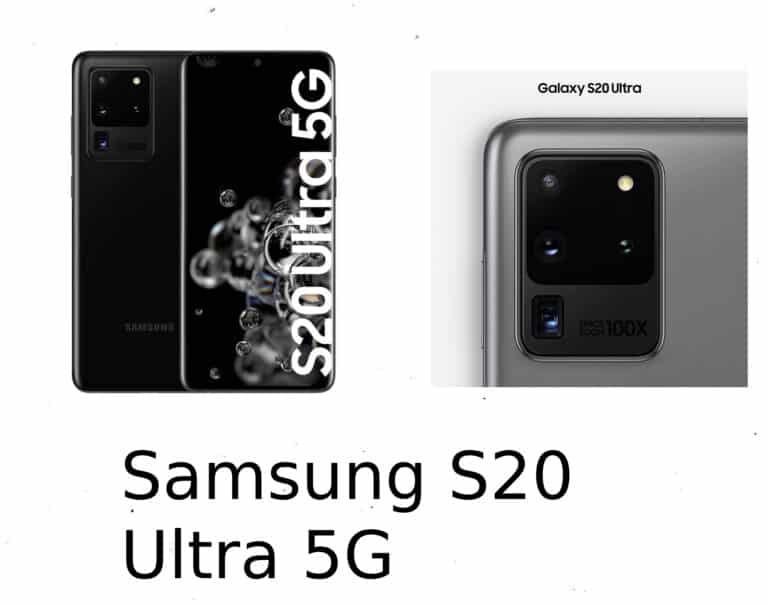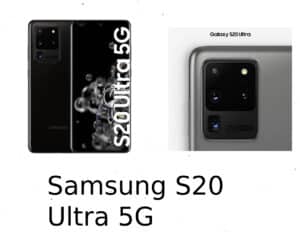What are you supposed to do with a phone such as Samsung Galaxy S20 Ultra? Samsung’s biggest phone at all is a spec monster with everything turned up to 11 – including a 100-percent camera zoom. All of this power, though, comes at a cost – both literally and metaphorically.
While amazing in many situations, the camera arrangement has some evident flaws that cause photo quality to be variable, and the international model’s battery life is low despite a large cell. Samsung is asking you to sacrifice size, style, battery life, and pricing in exchange for improved specs and a camera that isn’t the finest around. You don’t think lots of people could – but should – make that trade-off.
Table of contents
Design and build
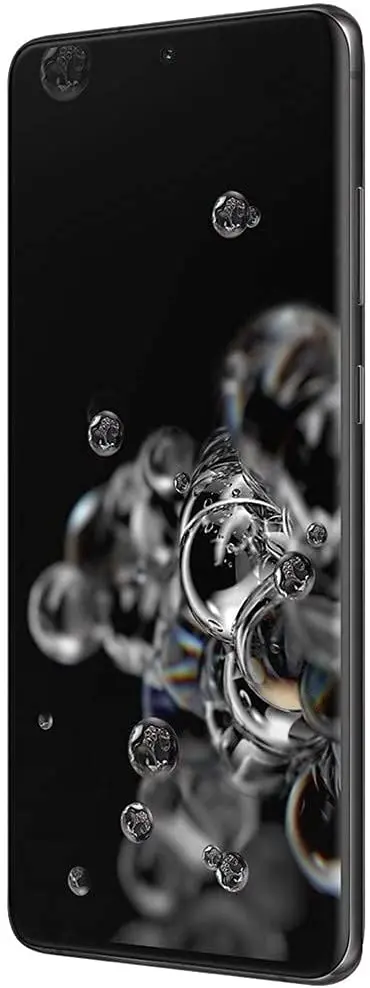
The first thing you should know about S20 Ultra is it’s a large device. Incredibly, really enormous. It’s a real chomper of a phone.
You might enjoy large phones. You could be used to a Samsung Galaxy S9+ and S10+, or perhaps a Note phone. This is larger than all of them combined.
Maybe not in terms of the massive 6.9-inch display, which is only broken up by one hole-punch camera, which is now smaller and more central. Sure, that’s a massive screen but the razor-thin bezels take the shine off – literally – as well as the decision to eliminate the curves and restore them to flatter corners keeps the big screen usable.
The issue would be that the S20 Ultra is somewhat thick. And it’s heavy. It feels out of scale, especially when compared to the slimmer S20 and S20+, & unbalanced due to the camera module’s enormous weight at one end.
You also need to discuss the camera module. Putting the specifications aside, for the time being, the Ultra’s quad-camera system is ugly. The idea to plaster ‘Space Zoom 100x’ here on the back of a £1400 phone is nearly inhumane, given it takes up a large section of the phone’s back and sticks out a mile.
Is there a headphone jack on the S20 Ultra?
This smartphone lacks a 3.5 mm headphone jack. The following choices are available while wearing a headset to make the calls or music: Use the USB Type-C earbuds that come with the device.
Despite its size, there doesn’t appear to be enough room for a headphone port, which has been pushed out across the S20 series. The specific Bixby button has also been removed; instead, a long press here on the power button now engages him by default, which you may adjust.
When you consider that the Ultra model is only available in grey or black, despite the fact that the lesser variants have flashier finishes, it’s evident that this phone is almost entirely about form over function. It’s not attractive, but it gets it done – but at this price, is just getting things done enough?
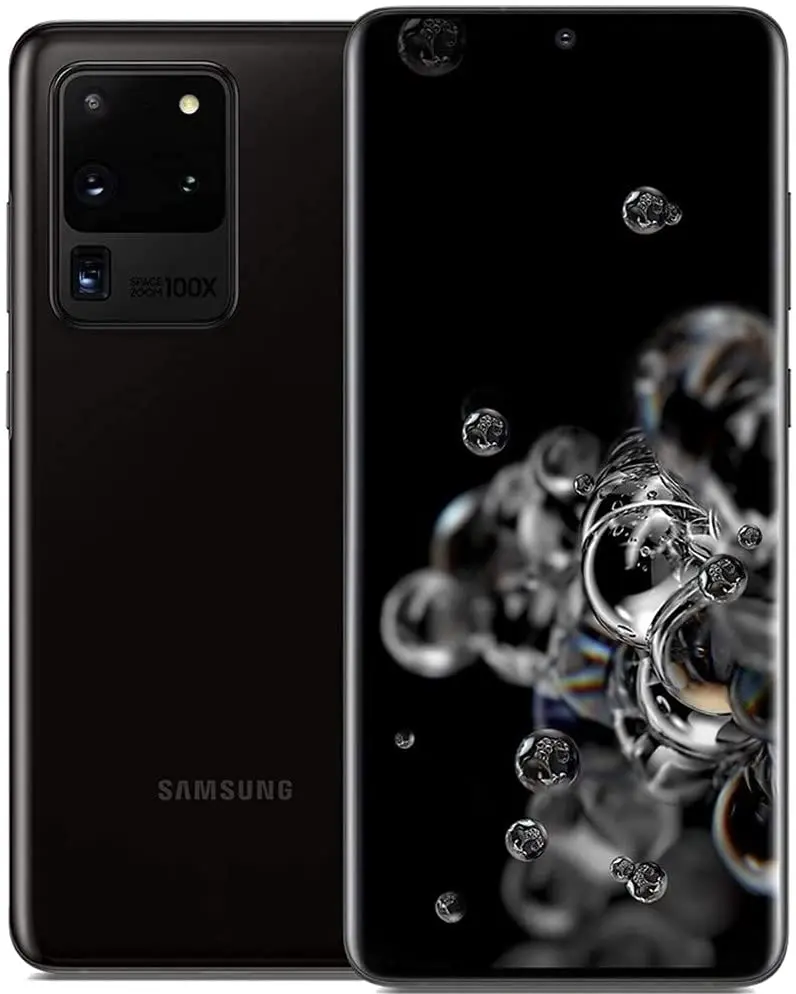
Camera

Let’s discuss the camera. This is definitely Samsung’s priority, as it’s the one area where Ultra’s specs differ significantly from those of the other S20 phones.
The main lens is a 108Mp f/1.8 shooter (rather than the variable aperture technology Samsung has employed in recent years). By default, images aren’t taken at 108Mp; instead, the phone employs pixel binning to merge nine pixels into one (referred to as “nona-binning” by Samsung) to produce sharper, more detailed 12Mp photos and improved dynamic range.
In general, the photographs are excellent. The Ultra’s camera can create remarkable levels of detail & deep, bright color without going too much into the over-saturated look seen on Huawei phones (though you’d still dial the saturation down if you could).
108Mp mode
You may switch to full 108Mp mode if you wish. They take a moment to process, and they’re a little slower, or the files are between 30 and 50 megabytes each. The fact that you won’t be able to distinguish is a testament to Samsung’s pixel-binning technology, and the sole benefit of the high-res photographs is the ability to crop in without sacrificing any crispness or clarity – not something you’ll need very often. The negative would be that the dynamic range in 108Mp photographs is much lower. Therefore you’d suggest sticking to regular shooting in most circumstances.
A 12Mp ultra-wide sensor joins the 108Mp main sensor. As well as a depth sensor and, arguably, the phone’s top-selling peak: a 48Mp optical zoom.
If they live in the USA, it may be the 1st super-zoom phone you’ve seen. Despite those of us in other parts of the world seeing similar technology in the Huawei P30 Pro and Oppo Reno 10x Expand last year.
Space Zoom 100x
Samsung’s ‘Space Zoom 100x,’ just like one of those 2Â phones before it, is based on a 5x telephoto lens that can be pushed up to 100x owing to added digital zoom. This is, to put it frankly, a clear ruse. You don’t need 100x zoom, and you won’t like the photos you take with it, not least. Because you’ll never be able to get the image you want without a tripod.
Still, as far as tech gimmicks go, it’s a great one, as well as the 100x max zoom outperforms Huawei and Oppo’s prior records. The lens excels at 5x zoom – there’s some loss of vibrancy & color depth (to still be expected with just an aperture of f/3.5), and it struggles more with moving things like animals, however, the detail this can capture is incredible.
As a result, the S20 Ultra camera is fantastic. When it works, that is.
Photographic issues
You may well have heard that early copies of the smartphone had a few photographic issues. Which forced them to postpone writing this review until Samsung sent me a fresh device with a patch that rectified the flaws.
First and foremost, you should disregard any reports of severe skin smoothing; this was obviously a software problem, and the patch completely resolves it. So it shouldn’t be an issue by the time you receive the phone.
The focus was another typical issue, and you have mixed news on that front. The autofocus was initially quite slow, taking several seconds to find the focal point. It’s been sped up, and it’s now only somewhat sluggish, but that’s to be expected.
Unfortunately, the correction accentuates one weakness that Samsung can’t truly address: this is a lousy macro camera. This is most likely due to the switch to a larger 108Mp sensor, that adds a natural bokeh effect to the image. Most of the time, this is great, but the inherently narrow depth of field makes shots of close subjects look soft when contrasted to the usual flat focus of other phones.
Food bloggers
Even taking a plate of food on Instagram usually leaves bits of that in focus or other parts fuzzy. You might believe you don’t take close-ups very often. But the problem is limitless to super-close macro photographs. You, like many others, would expect much from a phone at this pricing.
Other camera tricks were acceptable, but not really noteworthy. The larger sensor improves night mode, but Samsung’s algorithm game lags behind Apple and Google’s, particularly when it came to handling varied light sources, so despite the hardware advances. The results are positive but not the best around, particularly when it came to white balance. The ability to create hyper lapse at night is also a fun feature very few of us will be using multiple times.
Video Capturing
Fortunately, the S20 Ultra does better with ordinary video, capturing 4K at 60 frames per second or even 8K at 30 frames per second. You almost likely don’t need to record in 8K (the folder size is massive, and how would you watch it back? But the idea that what a phone could do it, and do well, continues to amaze me. But you can’t show you since YouTube won’t allow you to post an 8K video sample in the first place – yet more confirmation that the remainder of the IT industry isn’t quite there yet.
When capturing video, you can switch between front and back cameras (albeit not in 8K), enabling you to seamlessly move between filming yourself and filming something else — surely a vlogger’s dream.
There’s only one selfie camera, but it’s a 40-megapixel f/2.2 sensor (a significant improvement over the 10Mp on either S20s). Samsung still allows you to toggle between regular and ‘wide’ in the camera application, but this is essentially simply an option between using the whole lens or a cropped version.
In any case, the images are fantastic (Apart from having the same skin softness issues as the rear camera). The color spectrum is narrower than the back lenses, but the detail is remarkable – but we’ve probably reached the limit of selfie cameras here, so nobody needs to be seeing my close-up pores in much more depth than this.
Display

If the camera is the S20 Ultra’s main selling point, the display seems to be a close second.
You’ve already emphasized the sheer size – 6.9in for the uninitiated – but it also has a fantastic display, possibly the greatest in any phone right now. The Super AMOLED display has a resolution of 3200×1440 pixels, supports HDR10+, or can show at 120 frames per second.
If you’re not sure exactly what 120Hz refresh rate means, it refers to how quickly the display loads new graphics for a more extensive explanation, see our refresh rate explainer. Smoother browsing, more fluid animations, as well as the potential for greater frame rates while gaming is all benefits of a quicker refresh rate. The majority of phones feature 60Hz displays, with a few exceptions, such as the latest OnePlus device, having 90Hz displays. Samsung isn’t the first to have 120Hz (the Razer Phone was the first), but this is the first to include such a rapid display in a non-gaming device.
The panel is bright and vibrant
The S20 Ultra is as stunning from the front since it is an eyesore from the back, and the facts speak for themselves. The panel is bright and vibrant, with deep contrast, and good viewing angles, so all of the advantages of 120Hz. The decision to keep the curved edges in check pays off as well, greatly enhancing usability while leaving enough of a rounded edge to appear on the part.
Now for the disclaimers. First and foremost, the identical panel is available in the normal S20 and S20+. But in a smaller size (with the same resolution, the smaller phones should actually have a higher pixel density.). So, as impressive as this screen is, keep in mind that you don’t need the Ultra model to enjoy it.
The two top characteristics – 3200×1440 resolution & 120Hz refresh rate – are inconsistent. This is apparently to save battery life. Bt if you increase the refresh rate to its maximum. You’ll have to reduce the resolution to 2400×1080, & vice versa.
You’ll have to pick between smoother animations and higher-resolution pictures (can simply turn them off to save even more energy). You’re unlikely to dissatisfy in any case. While the idea of combining the two may entice you, the potential battery impact is not.
Battery

So, let’s speak about batteries. Despite the 5,000mAh capacity, it isn’t very excellent.
It’s worth noting that you’ve been analyzing a device powered by Samsung’s Exynos 990 processor. Most of the world gets that, but the US and a few other areas receive S20 phones with Qualcomm Snapdragon 865 CPU, and based on what you’ve heard from North American reviewers, those versions may have superior battery life.
In this case, you get around a day’s worth of battery life, but not much. On most days that you use the S20 Ultra, it’s set to about 20% when you go to bed, following ranging from 3 to 5 hours of screen usage. That’s OK, but that’s really very bare minimum for one new phone, and you’re concerned so, after 12+ months of its use, it won’t last much longer.
The key caveat is that this is utilizing the 120Hz refresh rate, as switching to 60Hz (while keeping resolution at FHD+, not max) does appear to help. But not as much as you’d assume – you’d say it saved the 10% or so over course of a working day at best. That adds to the impression that the problem here is the power-hungry Exynos chipset, which is identical to the S10 series’ problems.
Samsung Galaxy S20 Ultra: top-of-the-line flagship
Of course, some may argue that if you care about battery life. You should reduce the refresh rate, reduce the resolution, disable 5G, and so on. For some, such trade-offs may be worthwhile. But you believe it defeats the purpose of spending over a thousand on a top-of-the-line flagship. If you do have to disable half of the features in order to keep it functioning.
The fact that charging is quick is beneficial. With the Ultra, Samsung includes a 25W wired USB-C charger, which charged my phone from zero to 56 percent in half an hour. It can actually charge at a quicker rate of 45W, but you’ll need to purchase the more efficient charger separately. It’s also capable of 12W wireless charging, which is the same as the S10 phones from last year.
5G: A Future-Proof Technology

Although 5G is among the other standout features (it is, after all, in the phone’s entire name). You wouldn’t consider it a compelling cause to upgrade on its own.
Our Exynos version only supports sub-6 frequencies, which utilize the ones now in European infrastructure; however, Snapdragon models in the US also support mmWave, making them more future-proof.
You’ve been using the S20 Ultra with only a Vodafone 5G SIM, but while 5G speeds are great, coverage isn’t yet ubiquitous enough. Even in downtown London, where the office is located – so finding a 5G connection remains a chore.
Of course, things will improve with time, so there’s a case to be made for acquiring a 5G phone today. So you’ll be ready when the networks improve in a year or two, especially because 5G will be supported by practically every new flagship a year.
Essentially, even if you’re a skeptic, don’t discount the Ultra’s 5G support, but don’t consider it a compelling reason to upgrade.
Specs and performance
The rest of the specifications are huge as expected. The Exynos 990 (or Snapdragon 865) processor is accompanied by 12GB and 16GB of fast LPDDR5 RAM, as well as 128GB or 512GB of storage.
The phone is lightning fast and can easily handle any task you throw at it. That shows up in the benchmark results, which are some of the fastest you’ve ever seen. Though you can’t help but wonder whether the Snapdragon variant is even faster.
The phone is available in single SIM & dual SIM configurations, with support for MicroSD cards up to 1TB in each. Wi-Fi 6, Bluetooth 5.0, & NFC round out the connectivity options. While the security features remain the same as last year’s Samsung flagships, including face, unlock, and an ultrasonic under-display fingerprint scanner.
Software
The S20 Ultra comes with Android 10 – Google’s most recent operating system – and Samsung’s One UI 2.
Following last year’s revamp, Samsung has opted for a more cautious approach in terms of software this year, with the primary additions being useful sharing tools that will only function with the other Samsung Galaxy customers.
Quick Share is similar to AirDrop for Galaxy phones, and Music Sharing allows friends to attach to your Bluetooth speaker via your phone without having to go through fiddly pairing processes. However, both features are only available on other recent Samsung devices. They’ll only be useful if all of your friends get Samsung phones as well.
Power users
Power users will appreciate a function that allows you to lock up to three (or five, depending on the RAM model) apps in memory so that they always launch fast and in the same place. Most people won’t notice, but then again, this phone isn’t for everyone.
The only other major software update is the incorporation of Spotify into Bixby routines. This is excellent news if you’re one of the 3 people who use Bixby routines and have a Spotify subscription.
Is it worthwhile to purchase the Samsung S20 Ultra?
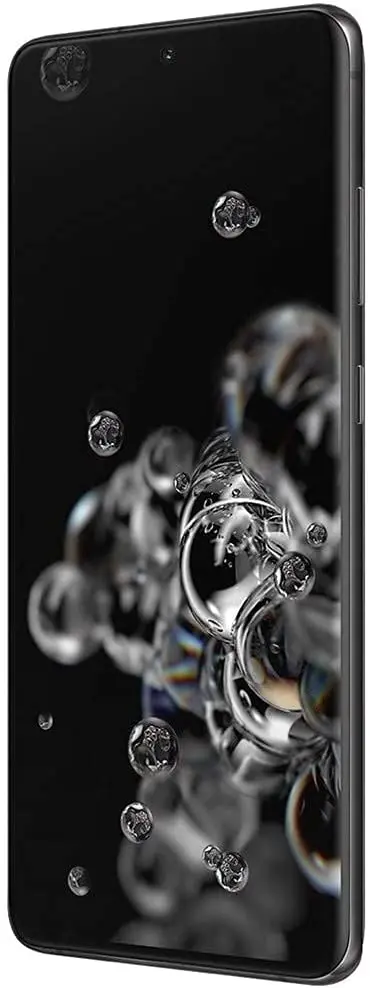
The S20 Ultra isn’t cheap, which should go without saying. It costs even more than Samsung’s new Galaxy Z Flip foldable at full spec, which is only cheaper than the Galaxy Fold out from the Korean giant’s current range, starting at £1,199/$1,399 for 128GB storage & rising to £1,399/$1,599 for 512GB.
The ordinary S20 or S20+ might entice you more. They start at £799/$999 and £999/$1,199, respectively, and offer nearly all of the same specs as Ultra in a smaller package – the camera is where the Ultra differs.
The Ultra can be more expensive than iPhone 11 Pro Max, which starts at £1,149/$1,099 (albeit only with 64GB storage) and is more expensive than most other Android rivals. With top-of-the-line flagships from rival companies available at hundreds less, Samsung is having a harder time than ever persuading customers to pay its premium.
To put it bluntly, at this price point, this phone either has to be near-perfect, or it has to shine so spectacularly in one or two areas that the shortcomings everywhere are justified. The S20 Ultra isn’t nearly up to par.
Conclusion
The Galaxy S20 Ultra isn’t really a phone that the majority of people should purchase. Most people can’t afford it, it’s too huge for most people to want, and it’s too ugly for surviving few to ever want to flaunt.
Even yet, it’s a phone with a lot of technical accomplishments, not only in the camera, which can outperform any competing flagship when it’s at its best. Even if it’s maddeningly inconsistent but also struggles in closeups.
The 120Hz refresh rate seems to be the crown jewel of what may be the best display on a phone correct now. However, the sacrifice of battery life is bittersweet. An issue exacerbated by Samsung’s continued use of inferior Exynos motherboards in handsets outside the US, resulting in reduced battery life and performance.
The S20 Ultra makes a strong case for itself if the camera is the only factor you consider when purchasing a phone. But for everyone else, it makes a few too many compromises.
Read more:
- Samsung Galaxy S20 Plus Review- What’s the hype about?
- Samsung Galaxy S20 FE Review: Worth the Savings?
- Samsung Galaxy S21 Review-Samsung’s top-notch powerful smartphone!
- Samsung Galaxy S20 screen protector you can buy!
- Operate Zoom in Accessibility on iPhone and iPad!


